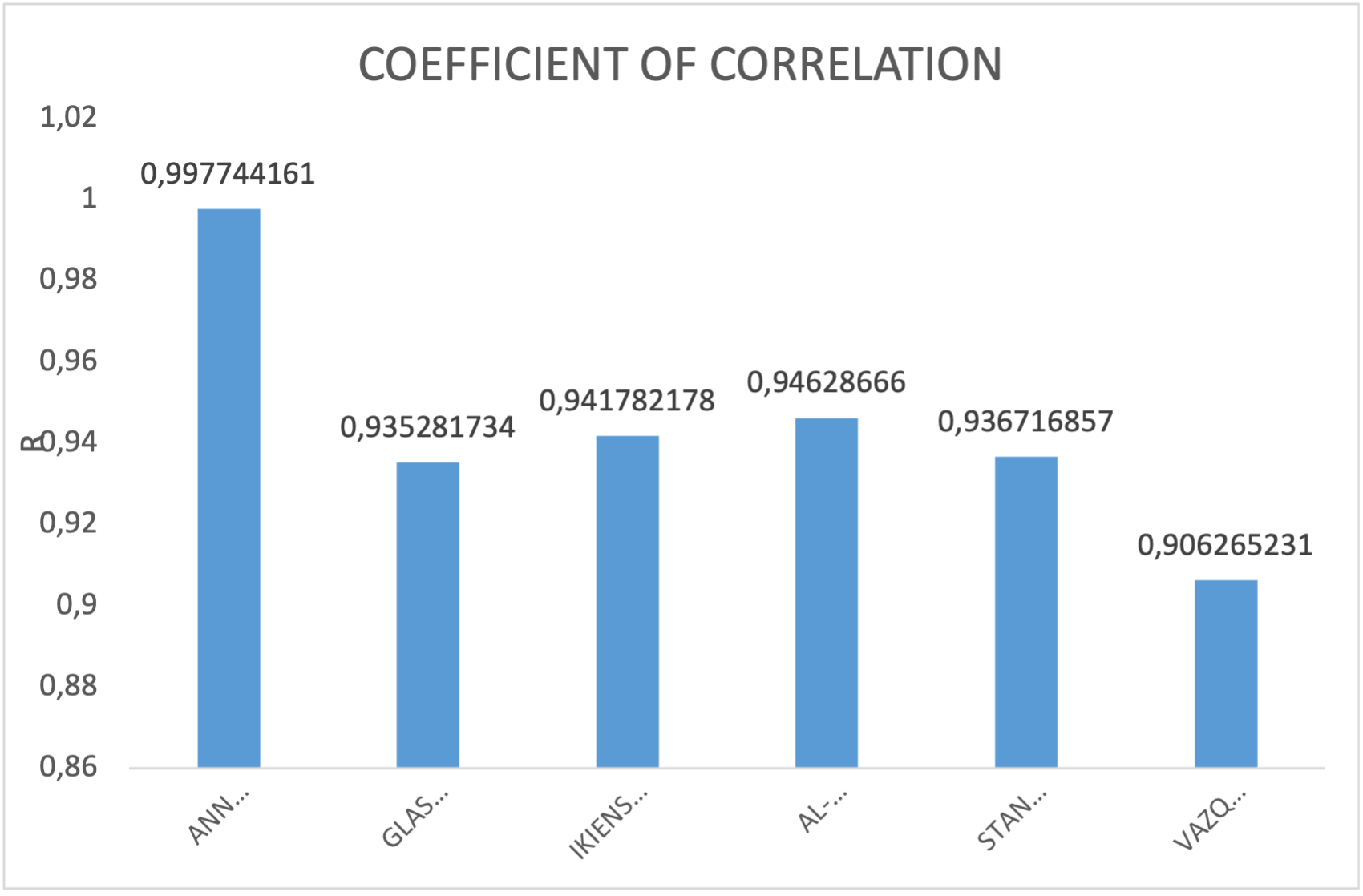Oil Formation Volume Factor Prediction Using Artificial Neural Network: A Case Study of Niger Delta Crudes
Abstract
Artificial intelligence techniques provide an alternative to conventional empirical correlation methods when experimentally determined oil formation volume factors (OFVF) are lacking. A new mathematical model is proposed using an artificial neural network (ANN) for estimating the OFVF for the Niger Delta crude oils. The method consists of two stages: data decorrelation through principal component analysis (PCA) and OFVF estimation through ANN. Data decorrelation was used to reduce redundancy in the data which decreased the number of neurons in the hidden layer needed for an ANN to achieve high accuracy. In the development of the model, 316 data points were obtained from the Niger Delta region of Nigeria. Application of data cleaning, outliers’ elimination and PCA analysis reduced the data to 243 points. 213 data points were used to develop the model of which 75% was used for training, 15% for validation and 10% for testing. The remaining 30 data points were used to test the predictive capability of the proposed model. The results obtained were compared with widely accepted empirical correlations of Standing, Glaso, Vazquez, Ikiensikimama & Ajienka, and Al-Marhoun. The proposed new model performed better than all of them in terms of coefficient of correlation, AAPE and RMSE. Hence the ANN model will reduce cost, save time, and also predict the OFVF of Niger Delta crudes with higher precision.
Full text article
References
Osman, E. A., Abdel-Wahhab, O. A., & Al-Marhoun, M. (2001). Prediction of Oil PVT Properties Using Neural Networks. Society of Petroleum Engineers (SPE).
Abooali, D., & Khamehchi, E. (2016, October-December). Towards Predictive Models for Estimation of Bubble Point Pressure and Formation Volume Factor of Crude Oil Using an Intelligent Approach. Brazilian Journal of Chemical Engineering, 33(4), 1083-1090. doi:dx.doi.org/10.1590/0104-6632.20160334s20150374.
Alimadadi, A., Fakhri, A., Alimadadi, F., & Dezfoulian, M. (2011, October 13-14). Predicting the PVT Properties of Iran Crude Oil by Neural Network. 1st International eConference on Computer and Knowledge Engineering (ICCKE).
Ramirez, A. M., Valle, G. A., Romero, F., & Jaimes, M. (2017, May 18-19). Prediction of PVT Properties in Crude Oil Using Machine Learning Techniques MLT. Society of Petroleum Engineers.
Kamari, A. (2016). The Determination of Petroleum Reservoir Fluid Properties: Application of Robust Modeling Approaches. Ph.D. Dissertation, University of KwaZulu-Natal, Durban, South Africa, Department of Chemical Engineering, School of Engineering, College of Agriculture, Engineering and Science.
Oloso, M. A. (2018, June). PREDICTION OF RESERVOIR FLUID PROPERTIES. Ph.D. Dissertation, University of Portsmouth.
Oman E.A, Abdel-Wahhab, O.A & Al-Marhoun, M.A (2001). Prediction of Oil Properties using Neural Network. Society of Petroleum Engineers (SPE).
Glaso, O. (1980). Generalized Pressure-Volume-Temperature Correlations. Journal of Petroleum Technology, 785-795.
Standing M. B. (1947). A Pressure-Volume-Temperature Correlation for Mixtures of California Oils and Gases. Drill & Prod. Pract., API (1947), 275-87.
Al-Marhoun, M. A. (1988). PVT Correlations for Middle East Crude Oils. Journal of Petroleum Technology, 650-666. doi: 10.2118/13718-PA.
Azubike,I.I., Ikiensikimama, S. S., & Oyinkepreye, D.O. (2016). Forecasting Gas Compressibility Factor Using Artificial Neural Networks Tool for Niger-Delta Gas Reservoir. Society of Petroleum Engineers (SPE).
Ikiensikimama, S. S., & Ajienka, J. A. (2012). Impact of PVT correlations development on hydrocarbon accounting: The case of the Niger Delta. Journal of Petroleum Science and Engineering, 80-85. doi:10.1016/j.petrol.2011.12.017 .
Vazquez, M. (1980). Correlations for Fluids Physical Property Prediction. Journal of Petroleum Technology, 968-970.
Authors
Copyright (c) 2023 Chiebuka Okoro, Angela Nwachukwu

This work is licensed under a Creative Commons Attribution-ShareAlike 4.0 International License.
This is an open access journal which means that all content is freely available without charge to the user or his/her institution. The copyright in the text of individual articles (including research articles, opinion articles, and abstracts) is the property of their respective authors, subject to a Creative Commons CC-BY-SA licence granted to all others. JEEE allows the author(s) to hold the copyright without restrictions and allows the author to retain publishing rights without restrictions.




